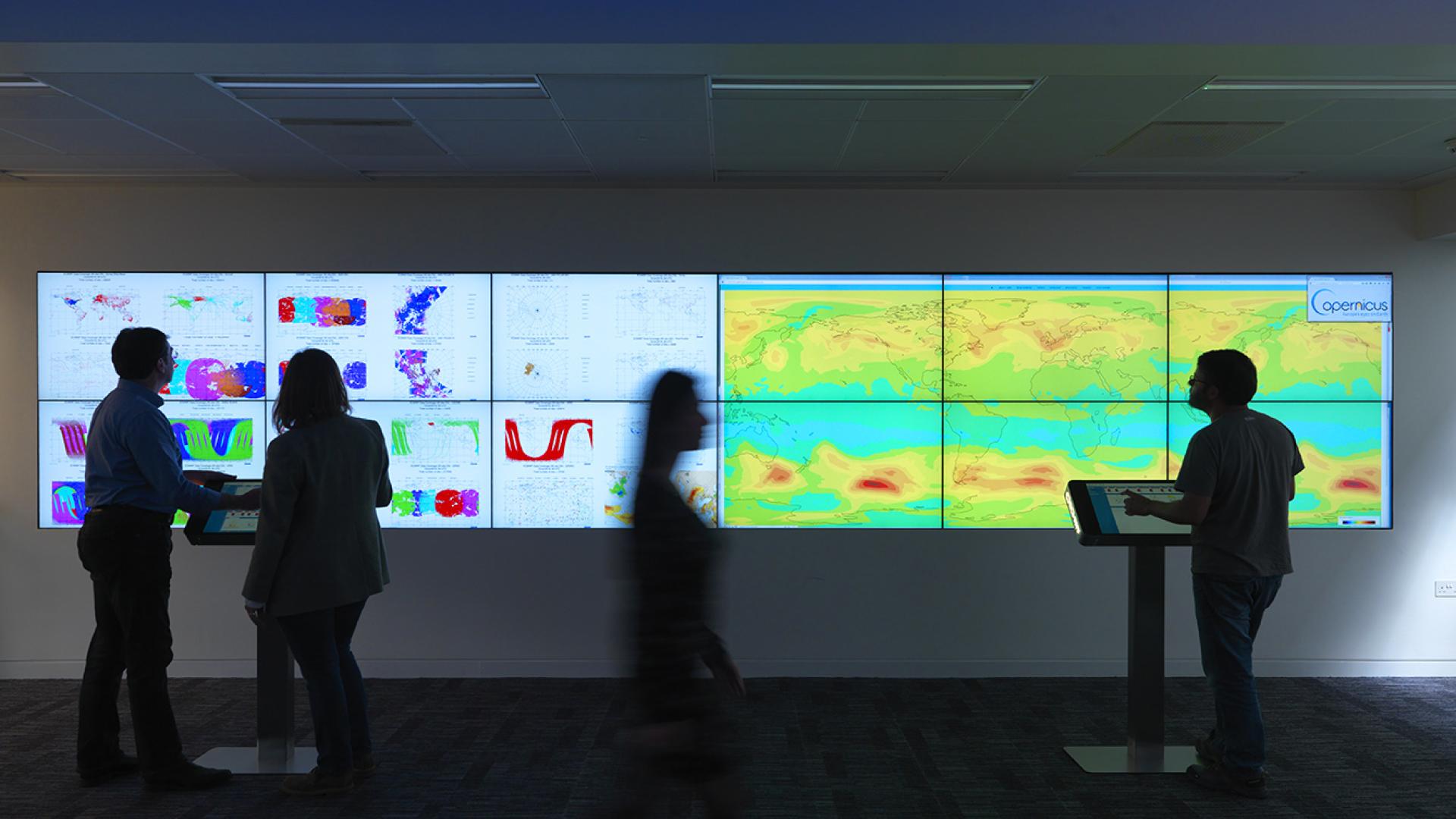Meteosat Third Generation: The eyes on a storm
Météo-France’s Sylvain Le Moal on preparations for Meteosat Third Generation.

These satellites will enable insights into the atmosphere, humidity, and lightning that could save lives


“We are really excited about the new MTG satellites” said Dr Tony McNally, Head of Earth System Assimilation at the European Centre for Medium-Range Weather Forecasts (ECMWF).
“The observations that we’ll receive from these satellites will be critical for many applications, including accurate forecasts of severe weather. The MTG satellite could capture the genesis or rapid intensification of a tropical cyclone in the Atlantic – that’s literally a life or death situation for the people of the Caribbean,” he said.
McNally is looking forward to a few instruments in particular that will further improve weather forecasts by providing even better pictures of fast-evolving meteorological systems: the Flexible Combined Imager on the first Meteosat Third Generation satellite, the imager, scheduled to launch at the end of the year and the Infrared Sounder on the second satellite, the sounder, expected to launch in early 2024.
“The Flexible Combined Imager will be a really big step up. We will get 16 channels, which enable us to tune in to different features of the atmosphere, similar to how different radio stations play different types of music. More channels mean more information, and from each individual channel we will get better spatial detail. Importantly, we’ll also receive more rapid updates,” said McNally.
“Then, the Infrared Sounder on the following MTG satellite is going to be an absolutely game-changing instrument. With more than a thousand channels, as is the case with this instrument, we can build up a three-dimensional, time-evolving picture of the atmospheric state with unprecedented vertical detail.”
McNally is also eagerly anticipating the data that will come from a brand new instrument to the Meteosat series of satellites, the Lightning Imager. The four cameras on board will collect continuous, near-real time data about intracloud, cloud-to-cloud, and cloud-to-ground lightning flashes. This information can be used to identify highly unstable and dynamic regions of the atmosphere – again critical for accurate weather forecasts.

Although crucial, the instruments alone are only one piece of the puzzle. Another essential piece is how useful the data they generate are for the people who work with them.
Weather forecasts developed by using these data keep people safe in planes and on the ground, enable utility companies to prepare a greater supply of electricity for heating when a cold front hits, and allow supermarkets to stock up on fresh meat and salad in time for a hot weekend. But these widespread benefits don’t just happen on their own.
“In order to make the best of a satellite you have to invest in infrastructure and collaborate with users and I think EUMETSAT does that really well,” said McNally.
“The close relationship between EUMETSAT and the ECMWF is really quite unique and highly productive – it ensures that these new satellite systems actually benefit the people who pay for them.”
Sarah Puschmann
Main image
Credit: A.Brookes/ECMWF Copernicus